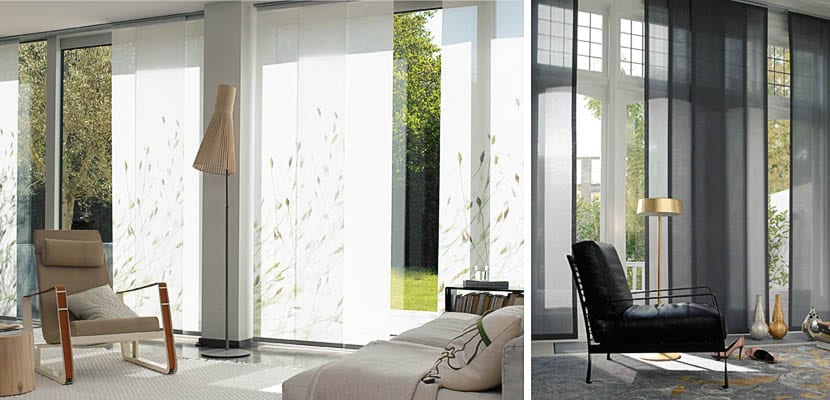
The japanese panels represent an alternative to classic curtains. Especially suitable for covering large windows, Japanese panels are a practical and decorative solution; regulate the entry of light into the room and add a modern touch to it.
De linear and minimalist aesthetic, the panels are composed of several panels that move horizontally through rails, overlapping each other to provide privacy and / or prevent the passage of light. Japanese panels also offer us numerous possibilities; we can use them as room dividers or to hide open storage solutions.
The Japanese panels are inspired by the shōji, the classic sliding paper doors with wooden panels typical of the japanese dwellings. In order to soften these, Japanese panels are usually made with rigid textiles and / or have weights in their lower area that keep the panels straight.
Japanese panel functions
Japanese panels provide us unlimited possibilities. In addition to being a solution to protect rooms from outside light, they are a great alternative to provide privacy. They are a great alternative to cover large windows, create different environments in an open concept space and in general, decorate a room in a minimalist style.
Windows
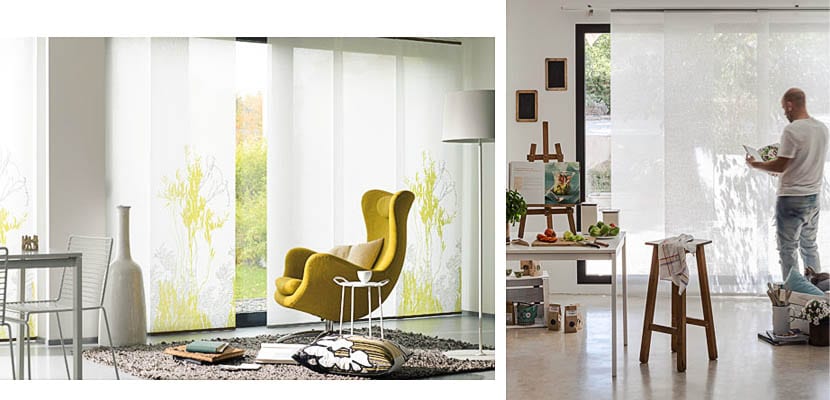
Japanese panels are a alternative to classic curtains when it comes to dressing large glazed surfaces. They are an effective solution to regulate the entry of light into rooms. Overlapping or separating the panels we can achieve different intensities of light and intimacy.
Room dividers
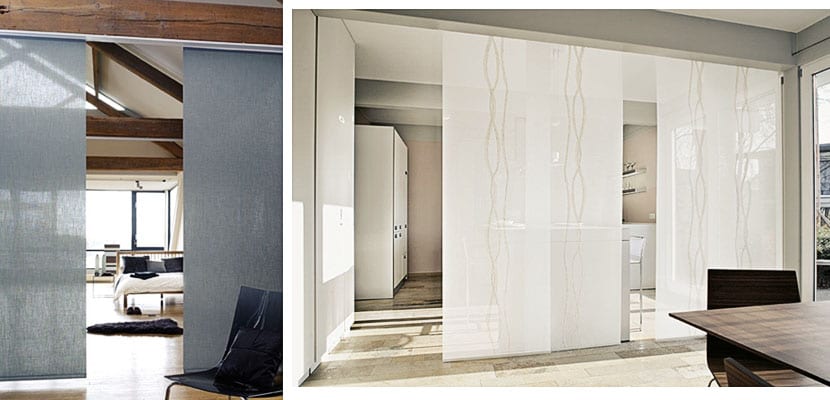
In the same way that they are useful to cover large windows, Japanese panels are also practical to separate different environments within one. In a multipurpose room, the Japanese panels provide intimacy to the different spaces. Visually separating the dining room from the kitchen or the bedroom from the office are just some of its uses.
Hide open storage solutions
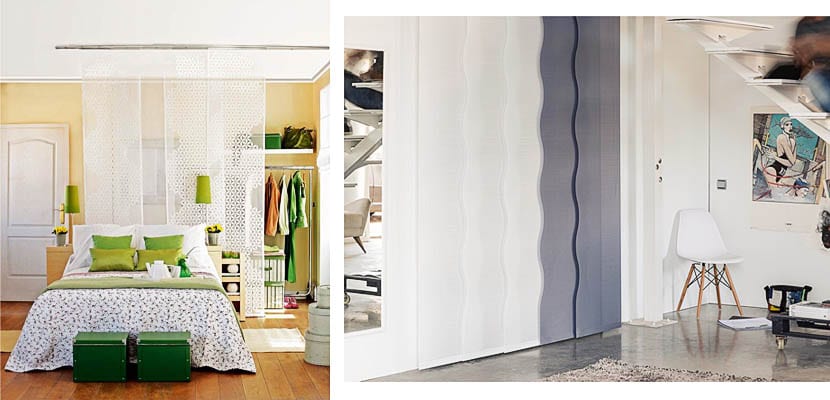
Japanese panels are also very useful for hiding open storage solutions. Many use them to create a fictitious door between the bedroom and the dressing room. We can also find them in living rooms or offices covering work shelves and cabinets, as you can see in the images.
Japanese panel types
If you decide on Japanese panels to add style to your home, you can choose between one wide range of fabrics to make the panels, both technical and traditional. You can also choose the opening system, do you want a remote system for greater comfort or a manual one?
According to the material
As we have already mentioned, Japanese panels are usually made of relatively rigid materials to keep their position. If not, to cause the fall and keep them straight, a weight in the form of a bar or rod is placed in the lower area of each panel. These bars can also be placed in intermediate positions to distribute the weight evenly and emulate the quadrants of Japanese doors.

The panels can be made of technical fabrics such as screen or polyscreen and traditional fabrics such as canvas or visil. The translucent fabrics offer intimacy, preventing them from seeing us from the outside and blurring the light. The «screen» fabrics, on the other hand, allow light to pass through but not heat. They are designed to be regulated in such a way that we can choose the amount of light that we let through and the external visibility. What about opaque fabrics? They do not let in light or heat so they are ideal in those rooms where we do not have blinds.
As these are independent panels, we can perform different combinations of fabrics in a same Japanese panel. Hence, the aesthetic possibilities of them are infinite. You can also choose between plain and patterned fabrics, elegant and fun ...
According to the opening system
The most popular panels are those of manual openingl. The opening of these can be carried out in three different ways: to the right, to the left or with a central opening to both sides. In addition to these, we will find motorized systems on the market to be activated remotely.
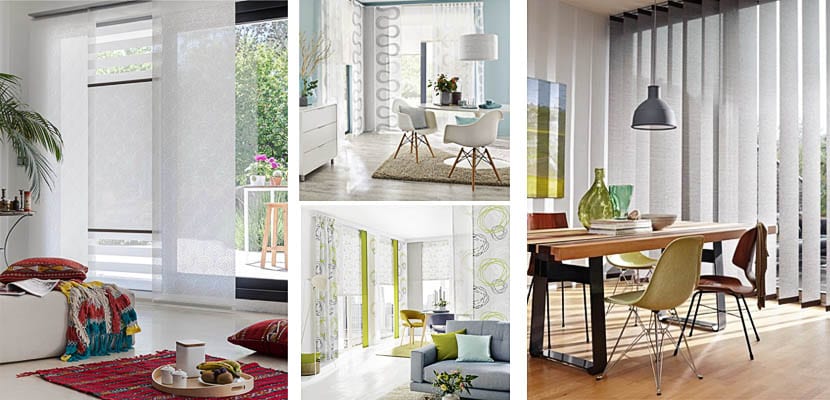
The motorized systems allow the integration of the Japanese panels into the home automation system. The latest generation motors make it possible to slide left or right to be silent. This type of panel is implemented both for domestic use, as well as for commercial or industrial use due to its high performance.
To regulate the entry of light in large windows, separate environments in multipurpose rooms or close shelves and cabinets. Japanese panels can fulfill different functions in our home, also providing it with a modern and minimalist aesthetic. The design possibilities are numerous; We can find Japanese panels made of different materials and with different opening systems. Do you like Japanese panels to decorate your home?